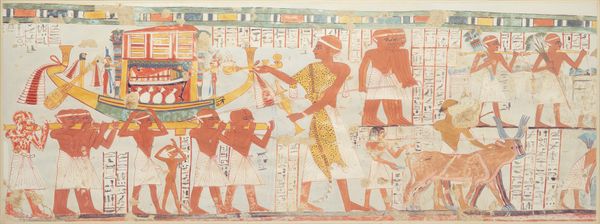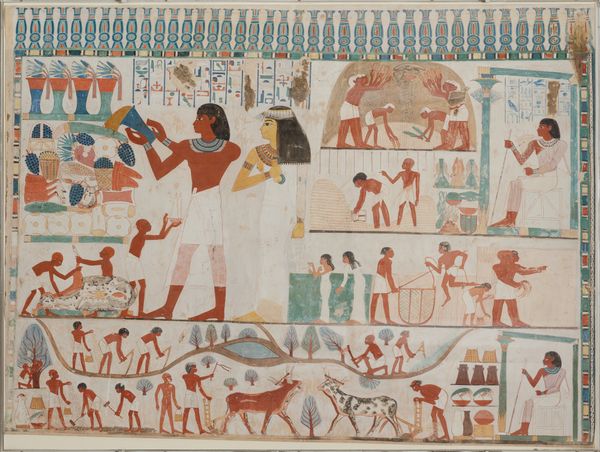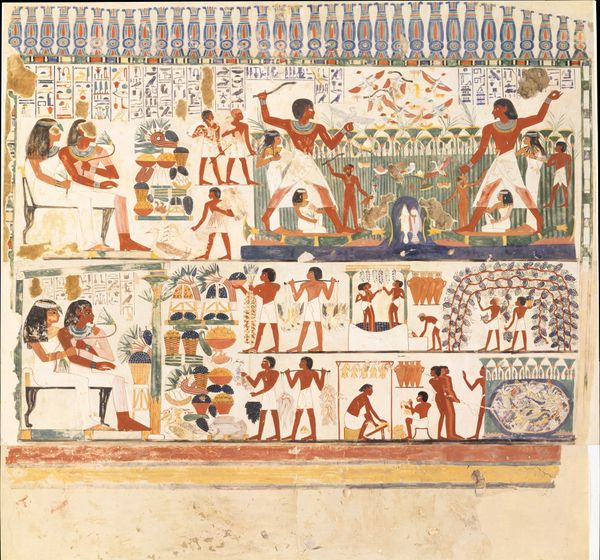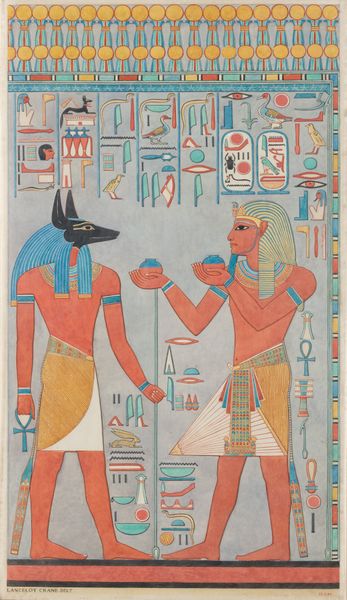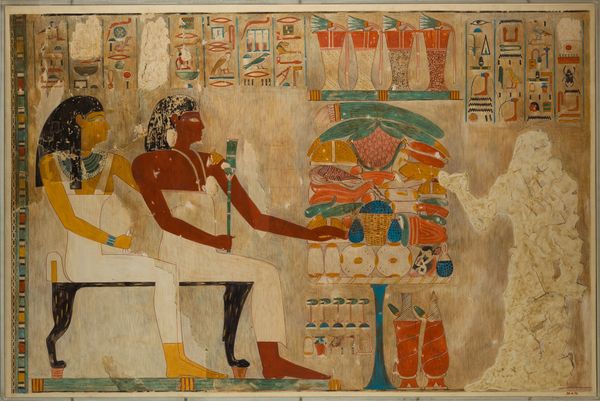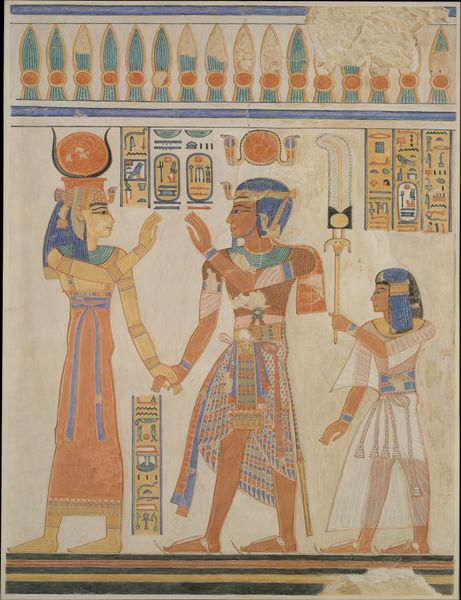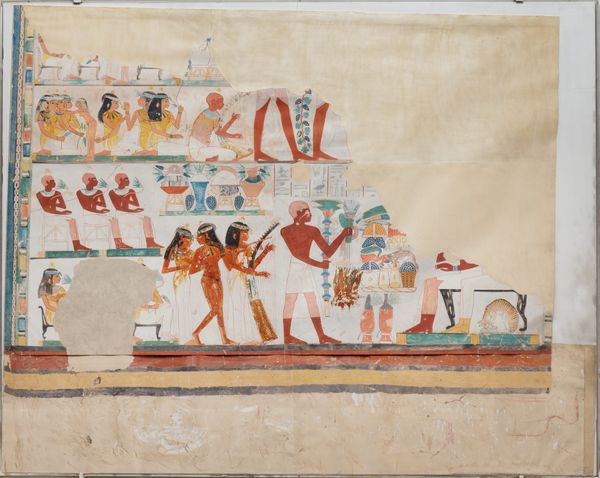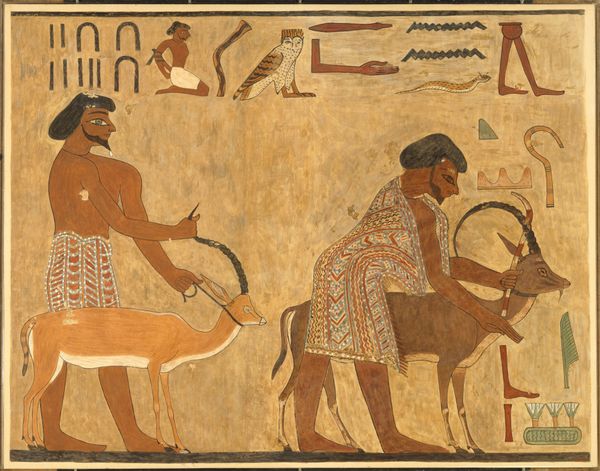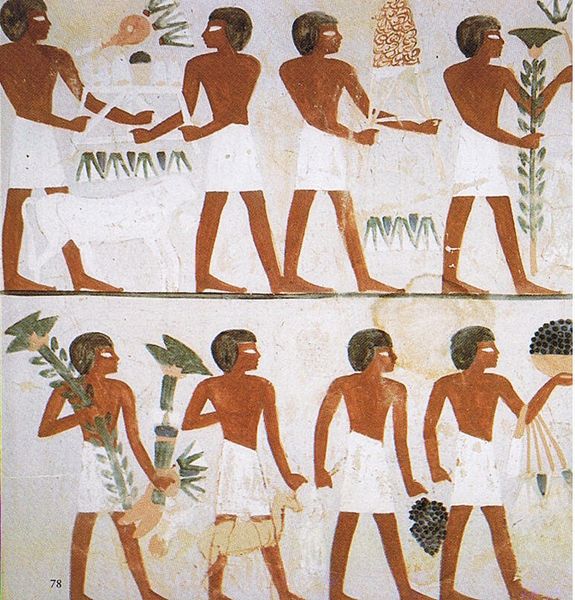
fresco
#
water colours
#
narrative-art
#
ancient-egyptian-art
#
figuration
#
fresco
#
egypt
#
men
#
line
#
history-painting
Dimensions: facsimile: h. 48.5 cm (19 1/8 in); w. 192 cm (75 9/16 in) scale 1:1 framed: h. 52/1 cm (20 1/2 in); w. 195.6 cm (77 in)
Copyright: Public Domain
Editor: So this is "Funeral Procession, Tomb of Pairy," created around 1390 BC in Egypt. It's a fresco by Nina de Garis Davies, currently held at the Metropolitan Museum of Art. Looking at this makes me think a lot about how death rituals and representations change over time, but also how much they stay the same. What’s most striking to you about this piece? Curator: It is compelling, isn't it? I am immediately drawn to how this image functions within a very specific political and social framework. Funerary art in ancient Egypt served not just a spiritual purpose but also a crucial role in legitimizing power and ensuring social order. Who was Pairy in their community? Did his representation create a symbol of authority and a narrative around Egyptian society? Editor: I’d imagine, right? It looks like he was a pretty important guy, because you don't paint all this detail if they aren't. It seems designed to communicate not only grief, but also a certain social standing, I agree. Curator: Precisely. Consider the level of detail in the depiction of the mourners and the goods being carried. The visual repetition of the men creates a sense of disciplined uniformity that serves a didactic purpose, almost communicating a system that continues after his death. Do you think the presentation suggests ideas of divine sanction? Editor: I hadn’t considered it from a political view, that's very insightful. I always focused on Egyptian art's cultural symbols or ritual practice, and I agree, in this society rituals served more purposes. Thanks for widening my perspective! Curator: Absolutely. Analyzing its role within cultural narratives gives an eye opening point of view, showing the art as active participant in historical, even modern views.
Comments
No comments
Be the first to comment and join the conversation on the ultimate creative platform.
